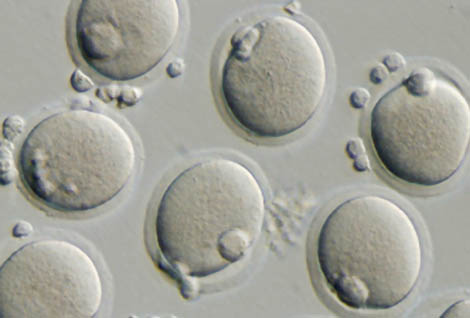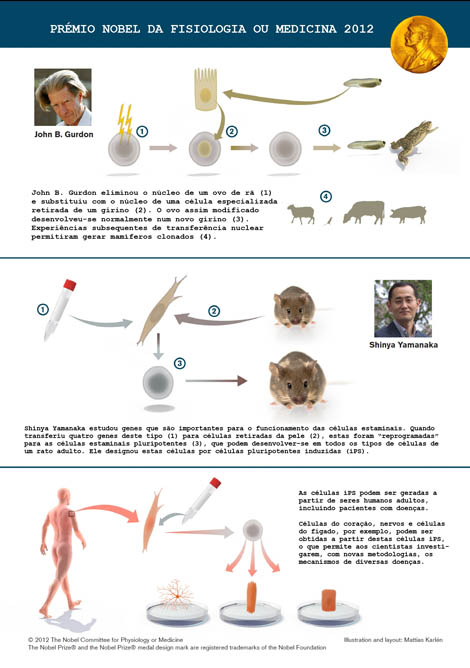 The Nobel committee recognized the role of two scientists for the discovery that the specialized cells that make up our bodies can be “reprogrammed” to become “immature” cells capable of, in turn, developing into cells of all types of tissues. of the body. This revolutionized the way we understand the formation, development and functioning of cells and multicellular organisms.
The Nobel committee recognized the role of two scientists for the discovery that the specialized cells that make up our bodies can be “reprogrammed” to become “immature” cells capable of, in turn, developing into cells of all types of tissues. of the body. This revolutionized the way we understand the formation, development and functioning of cells and multicellular organisms.
The recipients were British scientist John B. Gurdon and Japanese scientist Shinya Yamanaka.
The billions of cells in our body are the result of the development of a single cell: the fertilized egg. During the first few days after fertilization, each cell in the embryo is able to develop, to differentiate, into all types of cells that make up the adult organism. Therefore, such cells are called pluripotent embryonic stem cells.

As the embryo develops, these pluripotent cells will give rise to different tissues (nervous, muscular, bone, connective, adipose, among others) specializing to perform specific and essential tasks for the complete and adult organism. They are called somatic cells.
For about a century and a half, this differentiation of pluripotent stem cells into somatic cells was considered unidirectional and irreversible.
But in 1962, British scientist John B. Gurdon discovered that this century-old idea was after all wrong. In a now classic experiment, Gurdon removed the nucleus from an oocyte of a frog and, in its place, placed the nucleus of an adult cell from the intestines of a tadpole. Surprisingly, this modified oocyte developed and was able to give rise to a frog. The somatic cell DNA still had all the information needed to generate a complete frog.
The Nobel Committee recognized the importance of John Gurdon's work, awarding him this year the Nobel Prize in Physiology or Medicine.
 Shinya Yamanaka was born in that same year of 1962. 44 years later, this Japanese scientist discovered how adult rat cells can be “reprogrammed” to regain an “immature” state of embryonic pluripotency.
Shinya Yamanaka was born in that same year of 1962. 44 years later, this Japanese scientist discovered how adult rat cells can be “reprogrammed” to regain an “immature” state of embryonic pluripotency.
By introducing just four genes into adult cells (fibroblasts), he and his team turned them into pluripotent stem cells. The cells resulting from this laboratory process were called induced pluripotent stem cells (IPS).
In this way, Yamanaka identified, in embryonic stem cells, which genes are responsible for their pluripotency and which keep them capable of originating all others. For this work, this scientist was also awarded this year's Nobel Prize.
“The discoveries [by the two scientists] revolutionized our understanding of how cells and the organism develop”, states the statement from the Nobel Assembly of the Karolinska Institute in Sweden.
“We now understand that the mature cell does not have to be forever confined to its specialized state. The manuals were rewritten and new fields of investigation were established. By reprogramming human cells, scientists have created new opportunities to study diseases and develop diagnostic and therapy methods,” the same statement adds.
Author Antonio Piedade
Science in the Regional Press – Ciência Viva
Veja here the infographics with more quality.
Seminal articles by the two winners:
Gurdon, JB (1962). The developmental capacity of nuclei taken from intestinal epithelium cells of feeding tadpoles. Journal of Embryology and Experimental Morphology 10:622-640.
Takahashi, K., Yamanaka, S. (2006). Induction of pluripotent stem cells from mouse embryonic and adult fibroblast cultures by defined factors. Cell 126:663-676.


















Comments